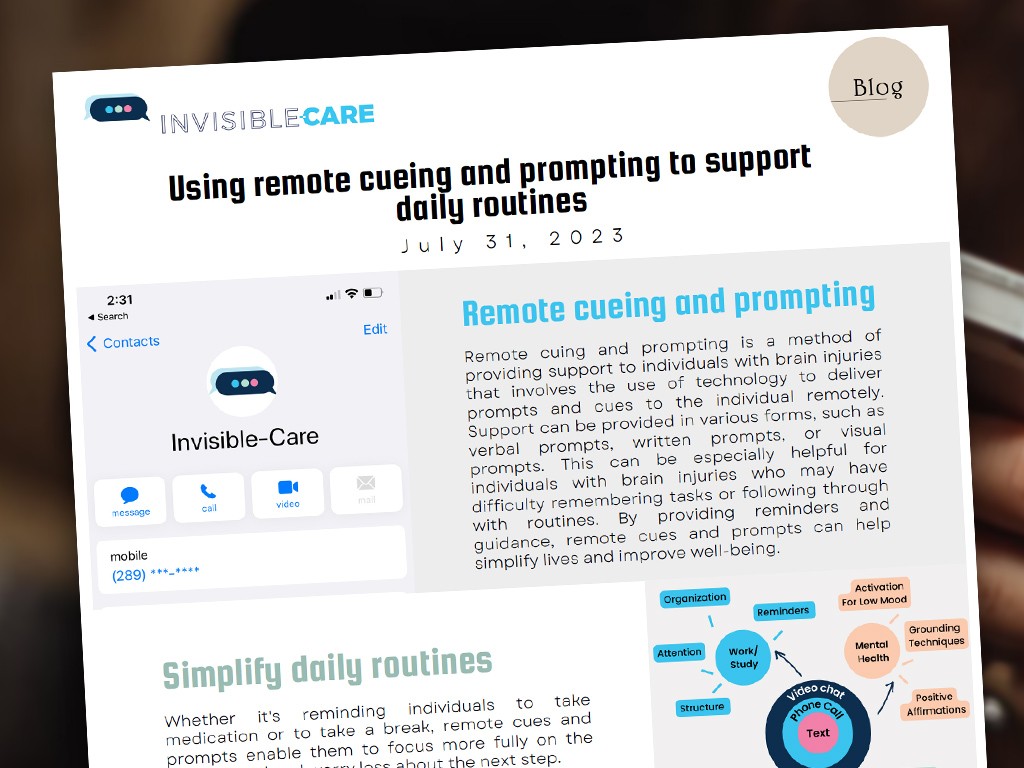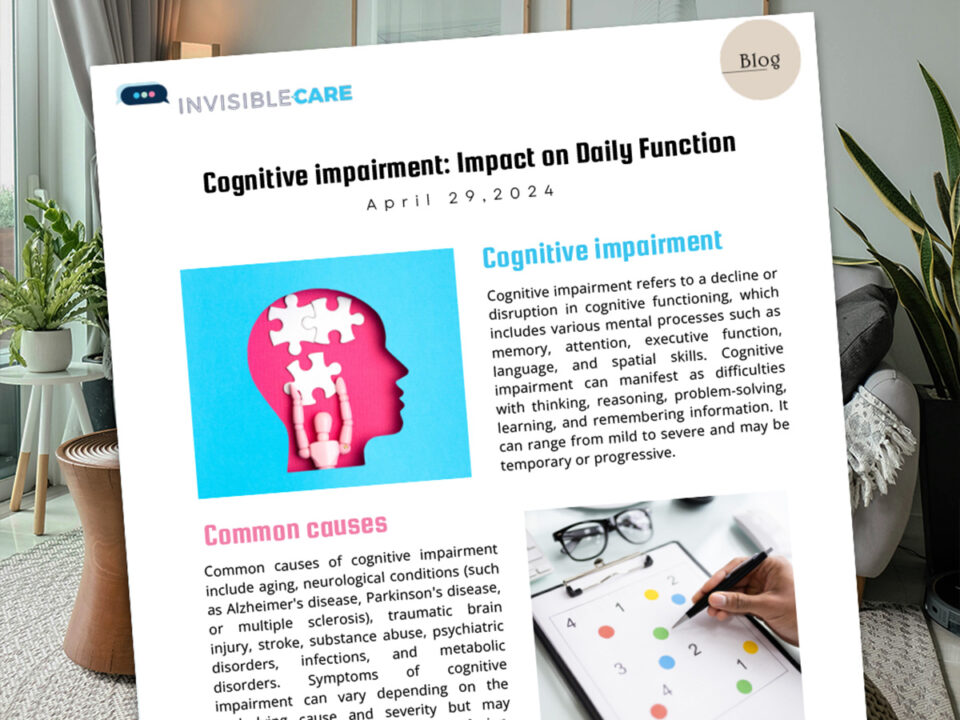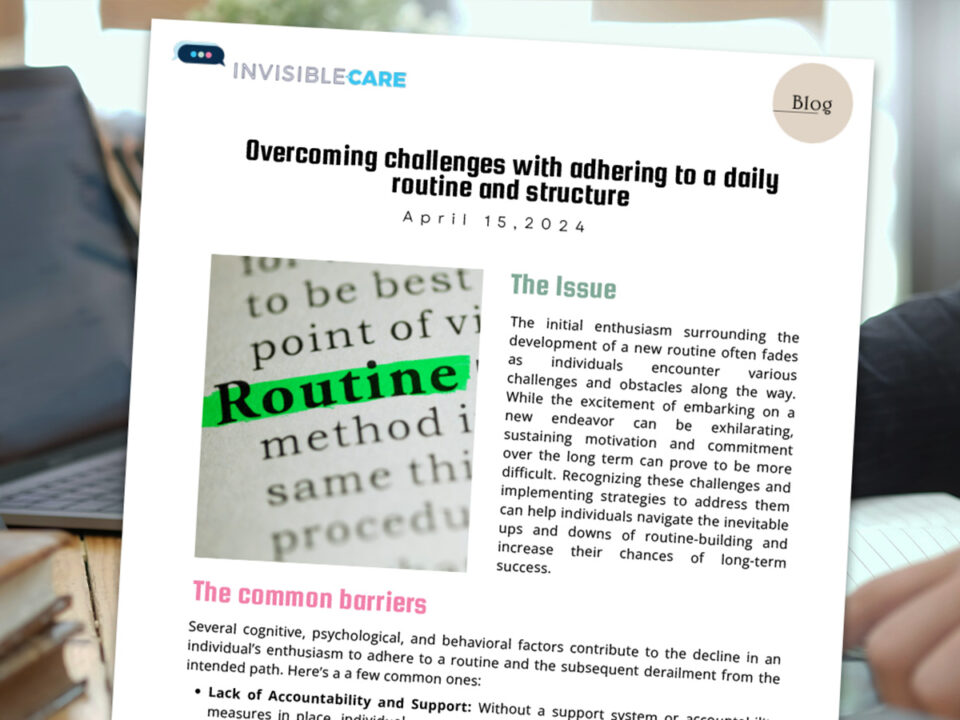
Invisible Care – Using remote cueing and prompting to support daily routines
July 31, 2023
Invisible Care – Navigating anxiety after a car accident
August 28, 2023In this issue:
Can texting and cuing a client for comfort, security and supervision be considered attendant care?
- Attendant care via remote cueing and prompting
- Form 1 and intermittent care
- Case laws
- Literature review: “The role of telehealth in providing attendant care services to individuals with disabilities”, “Assistive technology and attendant care: A review of the literature”, and “Telecare for people with intellectual disabilities: A systematic review”
- Mental health support
- Executive functioning
- “Second brain”
Why Invisible-Care?
This research illustrates how telehealth can increase access to care for patients, and that telehealth interventions are effective for patients. The team at Invisible-Care developed services based on this research in order to better serve clients. Invisible-Care harnesses the power of telehealth to provide remote attendant care services through a simple text message. All clients receive a smart tool that is tailored to their needs. This can include promoting for daily activities, medication reminders, and virtual calls to a PSW. Invisible-Care ensures that your client has access to the services that they need 24/7.





